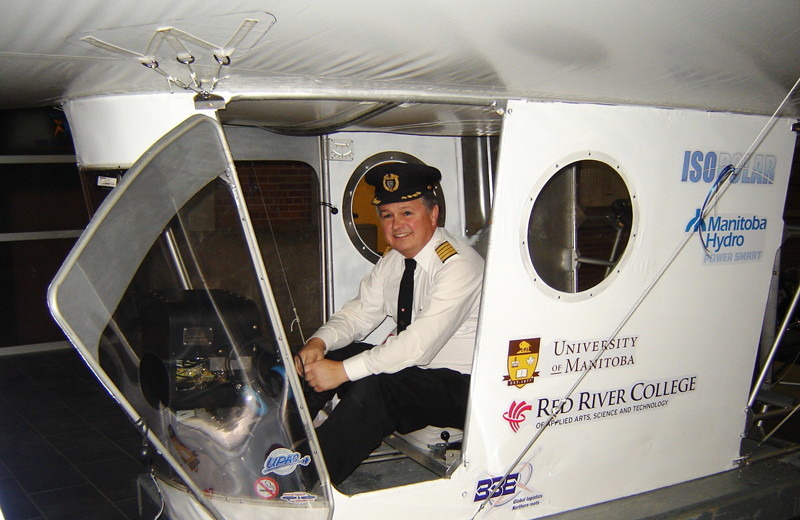Prototype airship ready for testing
A University of Manitoba professor wants to see Manitoba’s skies filled with “Skywhales,” hybrid airships powered by airplane engines and helium, that deliver goods to remote communities.
In December, an 80-foot prototype was shown off at a press conference at the U of M. Barry Prentice, a professor of supply chain management and former director of the university’s Transport Institute, leads the U of M’s airship research.
His hope is that larger airships could be used to transport supplies to northern communities, which are now only accessible when it’s cold enough for winter roads.
“Climate change means that the ice roads have become unreliable, and we have been left, a number of years, doing emergency airlifts,” he said. “At some point we have to recognize that this trend is not going to suddenly reverse.”
Airships travel more slowly than airplanes, but use less fuel and don’t require a runway to land.
The prototype airship will be used to research cold weather operations, ballast exchange, robotic flight, and electrical propulsion and fuel cells. But to build an airship large enough to carry freight would require building a very large hangar, to shelter the ship from wind while it’s inflated.
Prentice believes such hangars should be considered public infrastructure supported by government funding, like airports.
“If the governments would get behind this idea, we could do it in three years,” he said. “The technology exists and people are ready to go, it’s just a matter of where is the political will to help.”
A spokesperson for Manitoba Infrastructure and Transportation has not received a proposal for funding.
“Manitoba has not received a specific, detailed proposal for provincial funding of a ‘supply’ of airships,” the province said. “Manitoba would be pleased to receive and provide consideration to any such proposal.
“As airships evolve, it is possible such a mode of transport to remote communities could be added to the current range of transportation options,” the statement said.
The statement also stated Manitoba monitors progress of the industry and research “with interest.”
The existing airship was built by Prentice’s company, Buoyant Aircraft Systems International, and the not-for-profit airship research institute ISO Polar.
Jay Michno is operations manager for one of ISO Polar’s sponsors, the BBE Group, which manages transportation services for northern mining companies.
Michno said Discovery Air in Yellowknife is expecting delivery of its first airships from England within the next couple of years. He sees potential for hybrid airships as a slower, more reliable and cheaper form of freight transport.
“Fuel prices are constantly climbing, the truck transport is getting more expensive, and if you look at a year like this year, the winter roads in the north are pretty much unusable yet as of this year,” Michno said. “It’s time that something changed.”
Manitoba Hydro helped with the purchase of helium for the prototype airship, according to the university.
“We are interested in the potential of airships to transport supplies and materials to our northern facilities and also to service construction projects in remote areas,” Manitoba Hydro president Bob Brennan said in a statement.
Published in Volume 66, Number 16 of The Uniter (January 18, 2012)








